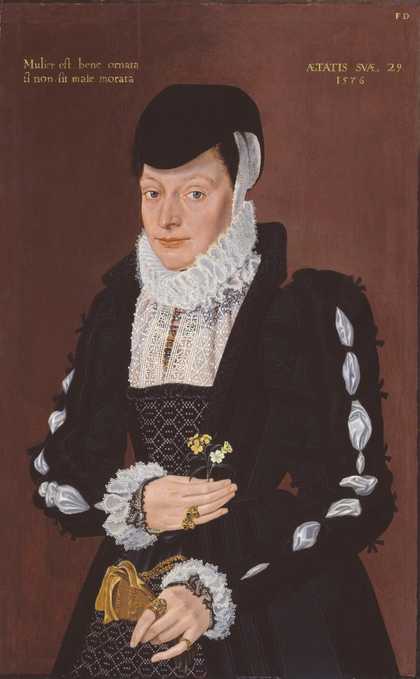
Fig.1
British School, 16th century
Portrait of a Lady
1567
Oil paint on panel
743 x 464 mm
Tate N04811
The painting is in oil paint on an oak panel measuring 743 x 464 mm (fig.1). The panel is made up of two vertical boards of oak, butt joined with glue (fig.2). The left board is 154 mm wide, the right 310. Later splits in the wood have been rejoined and strengthened at the back with wooden buttons; wooden inserts probably compensate for damage by woodworm (fig.3).
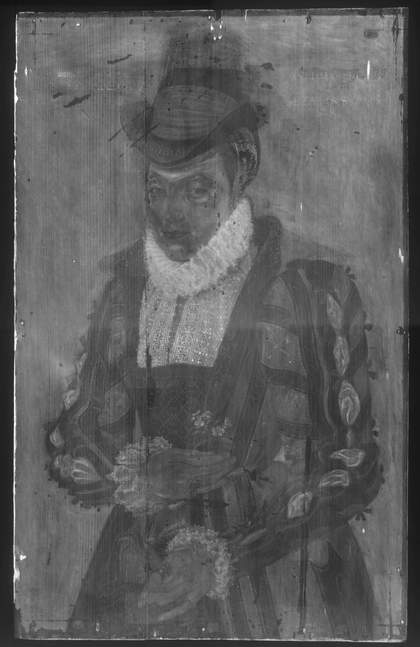
Fig.2
X-radiograph of Portrait of a Lady 1545
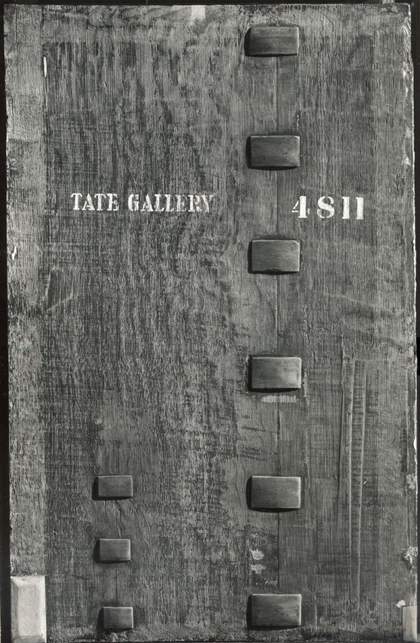
Fig.3
The back of Portrait of a Lady 1545, photographed in black-and-white
The panel now varies in thickness from 3 to 5 mm; before the work described above, it would have been thicker. Dendrochronological examination revealed that the oak is from the Baltic region, the tree felled between 1539 and about 1550.1 Copious amounts of ground spilling over the right edge of the panel indicate that this edge has not been trimmed since being painted.
The ground is off-white in colour and is composed of two thick coats of marine chalk bound in glue. Dark, linear underdrawing is visible in normal viewing in the hands. The same, viewed in infrared reflectography, shows as sketchy, parallel dashes marking the knuckles and nails (figs.4–5). There does not appear to be any priming.
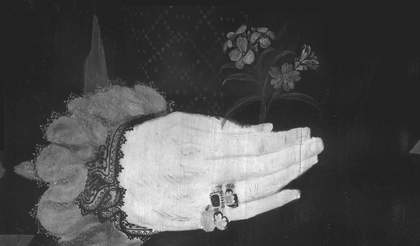
Fig.4
Infrared reflectogram of the sitter’s right hand

Fig.5
Infrared reflectogram of the sitter’s left hand
The paint is opaque and was applied wet-in-wet fairly thinly. The style is linear (figs.6–7). The step that is visible in normal viewing between the outline of the figure and the background can be explained by the three different colour schemes that lie beneath the final, dark pink background.

Fig.6
The sitter’s eyes
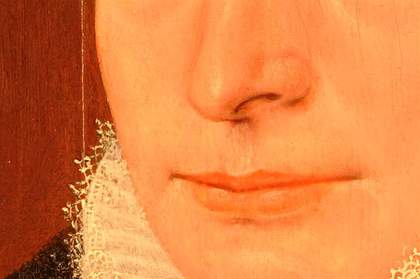
Fig.7
The sitter’s nose and mouth
Examination by the late Joyce Plesters at the National Gallery, London in 1961 revealed that the artist had started with a purplish pink background, then changed it to green, then to another shade of green before reverting to the pink that we can see. At the same time the style of hat was changed, as illustrated in the diagram drawn by Joyce Plesters (fig.8).

Fig.8
An impression of the changes that were made by the artist during painting, drawn by the late Joyce Plesters of the National Gallery, London
These changes are also apparent in the X-radiograph and infrared reflectogram (fig.9). Joyce Plesters reported that there were no intervening layers of dirt or varnish between these different colours, suggesting strongly that they were done by the artist over not too long a period.
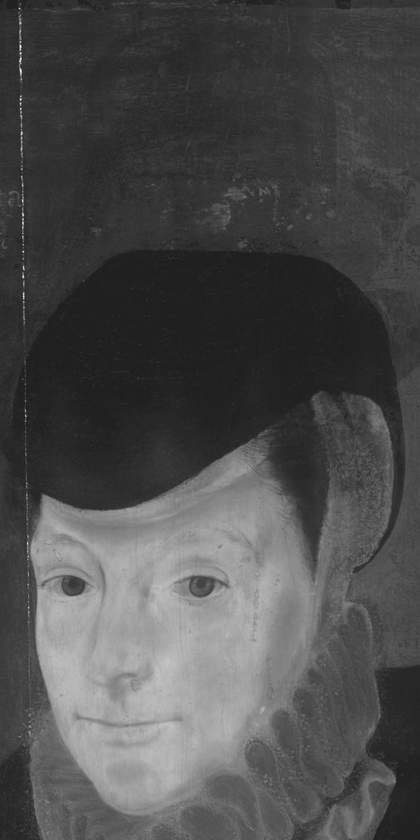
Fig.9
Infrared reflectogram of the face and hat
Some of the underlying background colours are visible where the final application of paint stops short of the top edge (fig.10).

Fig.10
Underlying background colours apparent at the top edge
A sample of the unfaded pink decoration at the very bottom edge of the sitter’s petticoat showed that the red lake was based on the dye from the cochineal insect (fig.11).2 For a western European painting of this date, it must have been Mexican cochineal (Dactyopius, coccus, Costa). Recent analysis of the pigment in the black costume revealed bone black mixed with large amounts of particles of glass; it is probable that the latter was used to make the black paint dry more quickly.3
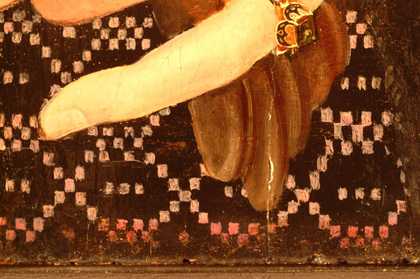
Fig.11
Unfaded pink paint along the bottom edge, where it has been protected from light by the rebate of the frame
May 2003
